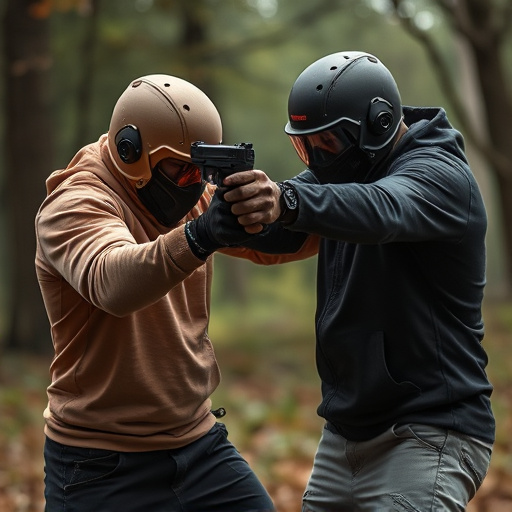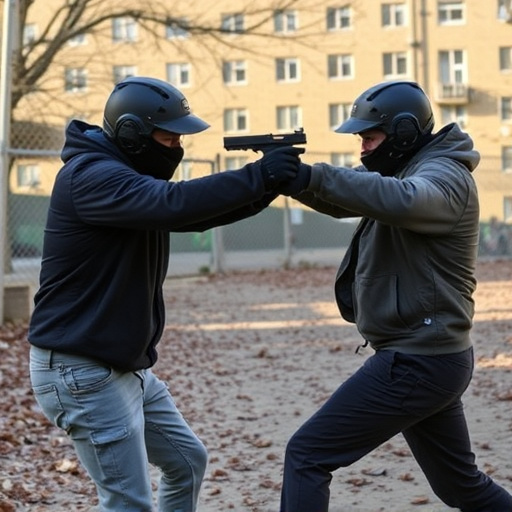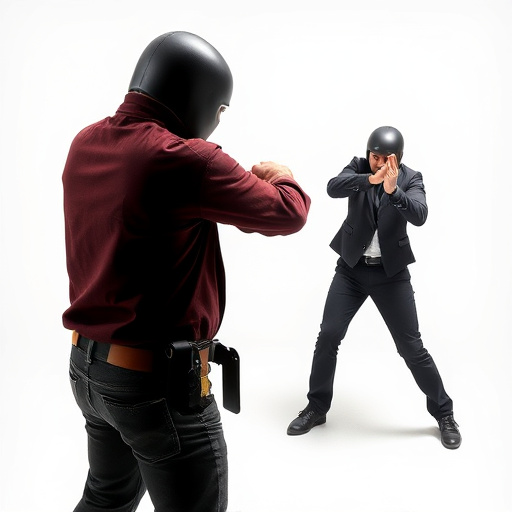When purchasing a stun gun, prioritize understanding battery types (Li-ion or NiMH) and specifications, as they directly impact performance and longevity. Look for high energy density, longer lifespan (500-1000 cycles), faster charging times, and replaceable/rechargeable batteries. Consider voltage (10,000V – 20,000V) and amperage (300,000 mA – 1,000,000 mA) for effectiveness and safety; higher voltage may deplete batteries faster while higher amperage offers stronger shocks with better battery life.
When considering what to look for when buying a stun gun, one of the critical factors is its rechargeable battery. This comprehensive guide delves into the key specifications that define stun gun performance. We explore common battery types like lithium-ion and nickel-metal hydride, dissecting how factors such as current draw, usage frequency, and charging habits impact their lifespan. Learn about voltage and amperage’s role in stun power, and discover tips to maximize run time, ensuring your stun gun remains a reliable personal safety tool.
- Battery Types and Lifespan
- – Overview of common battery types used in stun guns (e.g., lithium-ion, nickel-metal hydride)
- – Factors affecting battery lifespan (current draw, usage frequency, charging habits)
- Voltage and Amperage Specifications
Battery Types and Lifespan

When considering what to look for when buying stun guns, understanding the battery types and lifespan is paramount. The most common battery types used in stun guns are lithium-ion (Li-ion) and nickel-metal hydride (NiMH). Lithium-ion batteries offer higher energy density, longer lifespan, and better charging capabilities compared to NiMH. These advantages make Li-ion batteries the preferred choice for many modern stun guns.
The battery lifespan in stun guns can vary widely depending on factors such as usage frequency, charge cycle, and environmental conditions. On average, a high-quality Li-ion battery in a stun gun can last anywhere from 500 to 1000 charge cycles before its capacity starts to degrade significantly. Proper care, including avoiding extreme temperatures and fully discharging the battery only occasionally, can extend this lifespan even further.
– Overview of common battery types used in stun guns (e.g., lithium-ion, nickel-metal hydride)

When it comes to power sources, stun guns primarily utilize two common battery types: lithium-ion (Li-ion) and nickel-metal hydride (NiMH). These batteries are key components that influence the device’s performance, durability, and overall user experience. For instance, Li-ion batteries offer a higher energy density, making them lighter and more compact while providing longer life cycles between charges. They also charge faster than their NiMH counterparts, which is beneficial for users needing quick access to their stun gun during emergencies.
When buying a stun gun, understanding these battery specifications is crucial for what to look for. Consider factors like the type of battery, its capacity measured in milliamp-hours (mAh), and the charging time. High mAh values indicate longer usage between charges, which can be essential in situations where consistent power is required. Additionally, some models feature replaceable or rechargeable batteries, offering cost-effectiveness and convenience, thus enhancing the overall value for users.
– Factors affecting battery lifespan (current draw, usage frequency, charging habits)

When considering what to look for when buying stun guns, one of the critical factors is the battery lifespan. The duration a stun gun’s battery can hold its charge depends on several elements. First, the current draw of the device plays a significant role; higher current draws will deplete the battery faster. This is especially true for more powerful stun guns designed to deliver stronger jolts. Secondly, usage frequency is another key consideration; regular or frequent use will naturally shorten battery life. Users should be mindful of how often they intend to deploy the device and choose a battery that aligns with their needs. Lastly, charging habits can impact longevity; inconsistent or incomplete charges can reduce overall battery health. Opting for fast chargers and avoiding overcharging may prolong the battery’s lifespan.
Voltage and Amperage Specifications

When considering a stun gun as part of your personal safety arsenal, understanding voltage and amperage specifications is crucial. These parameters directly impact the device’s effectiveness and the level of protection it can offer. Look for products with a voltage range typically between 10,000V to 20,000V, which ensures a powerful enough shock to incapacitate an assailant. Amperage, measured in milliamps (mA), should be high enough to deliver a strong jolt but low enough to minimize potential harm to the user. A typical range for stun guns is around 300,000 mA to 1,000,000 mA, balancing power and safety.
What to look for when buying stun guns involves scrutinizing these technical aspects. Ensure the battery’s specifications align with your needs; higher voltage and amperage generally mean a more intense shock but also potentially faster drain on the battery. Consider the rechargeability feature as well, as it offers cost-effectiveness and convenience compared to disposable batteries.
When considering what to look for when buying stun guns, understanding rechargeable battery specifications is paramount. Opting for high-quality batteries, such as lithium-ion or nickel-metal hydride, ensures longer lifespan and reliable performance. Factors like current draw, usage frequency, and charging habits significantly impact battery life, so choosing a stun gun with a robust battery design that aligns with your intended use is essential. Always check voltage and amperage ratings to guarantee optimal shock delivery. By understanding these specifications, you can make an informed decision and select a stun gun with a battery that meets your needs.
